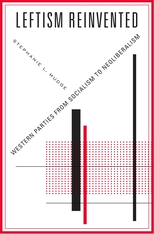In the spotlight is Leftism Reinvented Western Parties from Socialism to Neoliberalism by Stephanie Mudge. Keep reading for three insightful reviews on her 2018 book by Thomas Janoski, Gabriel Chouhy Algorta, and Jeff Stilley. 
Is it the Left or the Right that We Should be Focused On or Both? Review of Stephanie Mudge’s Leftism Reinvented
by Thomas Janoski, University of Kentucky
Two major books and a third have come out in the area of comparative political sociology in the last two years. Stephanie Mudge’s Leftism Reinvented: Western Political Parties from Socialism to Neoliberalism (2018, Harvard University Press) and Daniel Ziblatt’s Conservative Parties and the Birth of Democracy (2017, Cambridge University Press) followed by Sten Levity and Daniel Ziblatt’s How Democracies Die (2018, Crown Publishing of Penguin).[1] Mudge follows social democratic, labor and democratic (US) parties in three periods: socialism (1900 to 1929 but centered on 1920), Keynesian revolution (1930 to 1974 but centered on 1960), and ‘left’ neoliberalism (1975 to 2005 centered around 1995).